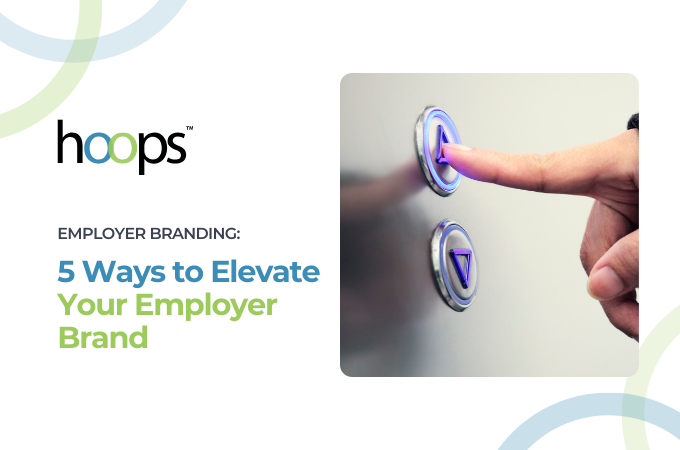Internal mobility is the movement of employees within an organization, and it's become essential in 2023. It involves allowing employees to play a role in finding new roles at the company that align with their interests. The agile culture that results from this creates a competitive advantage and helps retain employees longer.
In January 2023, the Bureau of Labor Statistics reported that the US had 2 job openings for every unemployed person. The availability of job openings makes it very easy for employees to move between companies if they choose to.
 This trend's importance lies in its potential to improve retention and engagement, lower recruitment costs, and encourage innovation. As we move through 2023, internal mobility should be at the forefront of leaders' minds for these reasons.
This trend's importance lies in its potential to improve retention and engagement, lower recruitment costs, and encourage innovation. As we move through 2023, internal mobility should be at the forefront of leaders' minds for these reasons.
The Shift in Career Growth Mindset
Professionals are increasingly rethinking career growth in non-traditional terms, signalling a shift towards internal mobility. Instead of climbing a traditional career ladder, professionals are now opting for a "career lattice." A career lattice lets employees move all around within an organization; not just vertically.
Companies are using talent analytics and workforce planning in an effort to do a better job of finding and retaining employees. Many companies used to look at the balance between headcount and budget to figure out how many employees they needed. However, for some time that approach has been losing effectiveness.
 Companies that are ahead of the curve today are there because they combine financial forecasts, headcount management, and talent acquisition pipelines. The process of creating this kind of workforce planning model always starts with data collection. You have to know how many employees are coming and going, which ones have the right skills, and track employee performance.
Companies that are ahead of the curve today are there because they combine financial forecasts, headcount management, and talent acquisition pipelines. The process of creating this kind of workforce planning model always starts with data collection. You have to know how many employees are coming and going, which ones have the right skills, and track employee performance.
Depending on your position at your company, making a case for implementing a workforce planning strategy might be an uphill battle. HR is almost always responsible for overseeing the implementation, but success requires buy-in from the entire company.
For many years, there's been talk about the shift away from long-term employment to more regular job changes. This trend continues today, but more companies are finding ways to accommodate the desire to try something new. When this happens, employees that would have left their company for another one wind up staying around longer. Employees may move into roles very different from what they were hired for, but retaining them is better than losing them.
The Role of AI and Predictive Analytics in Promoting Internal Mobility
 Artificial Intelligence (AI) platforms, coupled with predictive analytics, have emerged as powerful tools for promoting internal mobility. When used correctly, these platforms offer a long list of time-saving and engagement-boosting tools.
Artificial Intelligence (AI) platforms, coupled with predictive analytics, have emerged as powerful tools for promoting internal mobility. When used correctly, these platforms offer a long list of time-saving and engagement-boosting tools.
For example, they can help with shortlisting internal candidates, providing tailored development content, and creating career paths. All of this can be extremely personalized, based on individual career goals and interest areas.
For example, cloud-based talent platforms like iCIMS' Opportunity Marketplace allows talent managers to share, capture, and leverage talent data. This can help deliver a progressive employee experience and enable the internal mobility of the business to grow.
Benefits of Investing in Internal Mobility
Investing in internal mobility offers several benefits, including the ability to attract top talent and fill critical skill gaps. For most businesses though, the amount of money that an effective mobility program can save is usually the eye-opener.
 According to a 2019 Gallup report, a single employee's replacement cost is between 1/2 and 2x the employee's annual salary. This is apparently a "conservative estimate", but they go on to give a more tangible example of the implications. A 100-person company with average salaries of $50,000 could have replacement costs between $660,000 and $2.6 million in a single year.
According to a 2019 Gallup report, a single employee's replacement cost is between 1/2 and 2x the employee's annual salary. This is apparently a "conservative estimate", but they go on to give a more tangible example of the implications. A 100-person company with average salaries of $50,000 could have replacement costs between $660,000 and $2.6 million in a single year.
The best way to avoid these extreme financial costs is to invest in a robust employee mobility strategy. Deloitte highlighted the success of such a program in this article. In short, helping employees reskill themselves for new positions in the organization led to a 30% increase in employee engagement.
Adding to this, LinkedIn's Global Talent Trends 2020 report, found that employees stay 41% longer at organizations with high internal hiring.
Conclusion
Moving forward in 2023, it's clear why businesses that can offer career mobility to their employees, should. Internal mobility programs like regular training and certification programs go a long way to upskill internal candidates. Having a well-defined internal mobility strategy doesn't just help you retain top talent; it boosts engagement and job satisfaction.
The benefits of internal mobility are only becoming more apparent with time. As more research is conducted on more companies, we'll continue to get closer to defining what successful internal mobility looks like.
Want to learn more about how to leverage internal mobility to boost talent attraction and retention at your company?
Click below to contact Hoops HR!







